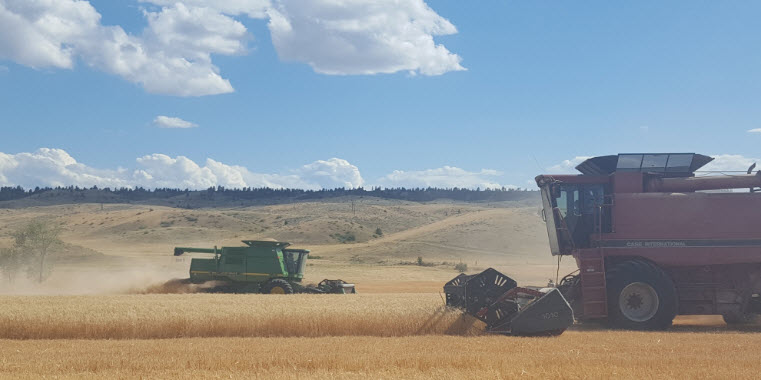GREAT FALLS, Mont.—Falling number remains a topic of discussion as heavy rainfall and dew continue to delay harvest of spring wheat and durum.
Discounts for low falling numbers can be significant. However, please remember that blending grain with low FN with sound grain can be risky because the relationship is not linear, and it is difficult to predict what the FN of the blended grain might be. For example, blending grain with a falling number of 250 with grain of an FN 350 will not result in an overall falling number of 300, but instead could lead to an overall FN of 270, thus discounting the entire load.
The wheat industry typically considers grain with FN values over 300 seconds to be sound, while grain with values below 300 seconds are often discounted. Low FN number values are possible even if there are no visible signs of germination. Grain with low FN is discounted because of its reduced value to the baking industry. Flour made from grain with low FN has low water absorption, reduced mixing strength and forms a sticky dough. Bread made from flour with low FN can result in lower loaf volume, crust strength and crumb texture, and creates loaves that may collapse or produce holes in the middle.
There are two primary causes of low FN. The first and most common is due to pre-harvest sprouting and the second potential cause is called late maturity alpha amylase (LMA).
For information on the falling number test, please contact the Montana State Grain Lab at 406.452.9561 or the Montana Wheat and Barley Committee at 406.761.7732.
The Montana Wheat and Barley Committee is a producer funded and directed check-off organization for wheat and barley growers in the state. Its mission is to protect and foster the health and prosperity of the Montana wheat and barley industry. Visit montanawbc.com for more information.
# # #


